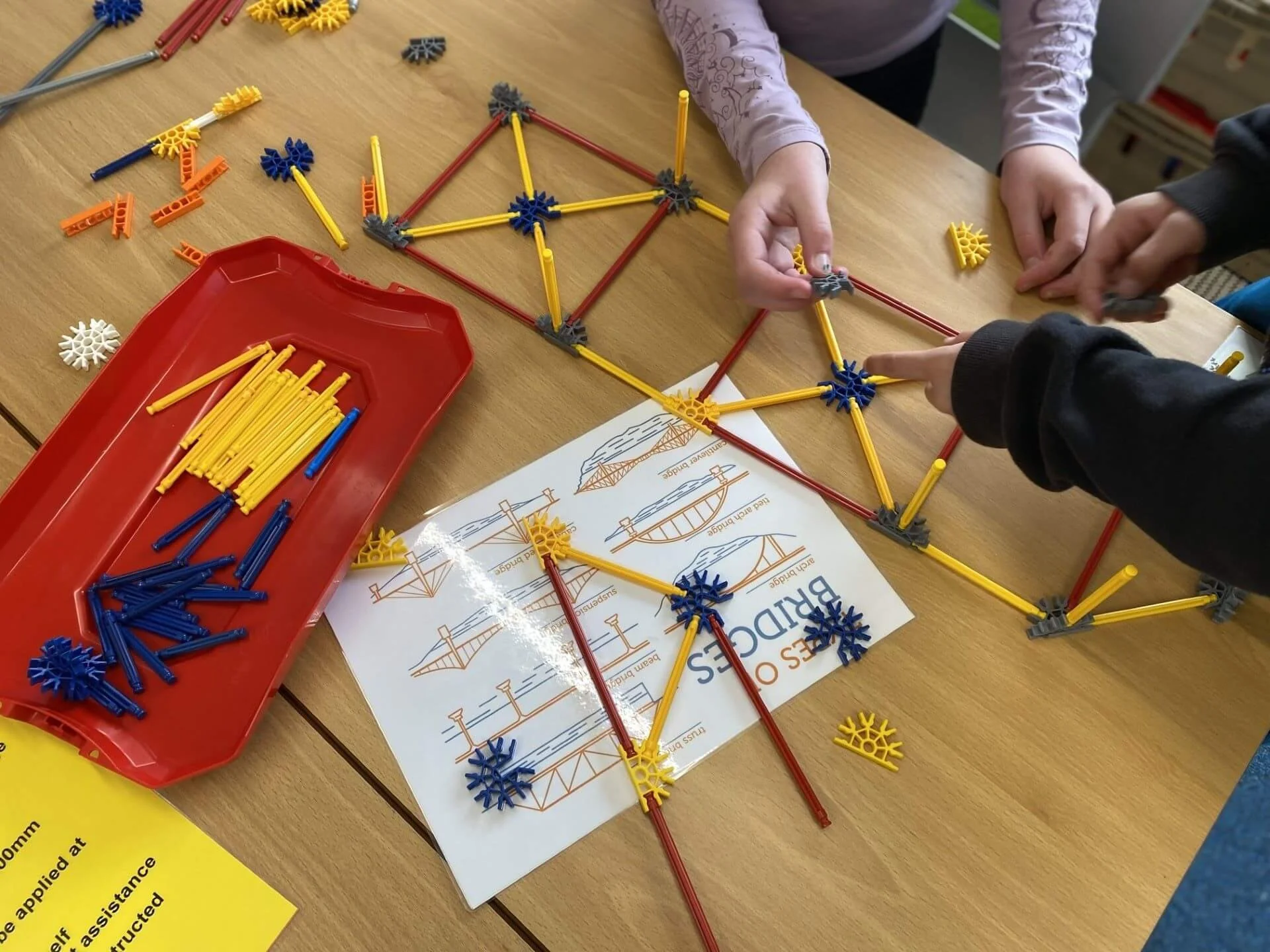K’Nex Bridge Building 2024
The K’Nex Bridge Building Challenge at Dunrossness Primary School
Twenty-five intensely engaged engineers are frenetically working against the clock to produce an outstanding new design, one which uses just the right amount of materials, which will withstand huge forces and be built on time and to budget… this is the K’Nex Bridge Building Challenge with Primary 6 and 7 in Dunrossness Primary School!
On a crisp Autumn morning, I joined Ewen at the school to help with an innovative bridge building workshop he has developed and delivered to classes across Shetland. With a focus on active engagement and teamwork, I could see that this highly effective workshop is a great addition to any STEM activity plan.
A Personal Perspective on STEM Education
As someone with experience writing, delivering, and training science communicators for STEM workshops—gained through my work with Glasgow Science Centre and the Edinburgh Science Festival in Abu Dhabi—I was curious to see how this workshop compared.
We set up the classroom with K’Nex kits at each table, numbered teams, inspiring images of bridges, and some helpful hints and tips to get started. The students filed in, their eyes wide with curiosity as they examined the materials in front of them.
Ewen began the session with a brief introduction to civil and structural engineering, encouraging the students to think about strong shapes, the balance of material weight versus strength, and how best to work as a team. Teamwork is just as essential as technical skills for this challenge. Once teams were assigned their stations, the K’Nex boxes were cracked open, and the challenge was officially underway.
Team Dynamics and Problem Solving
It’s always fascinating to observe how team dynamics develop and influence the final outcome. As Ewen and I offered advice and encouragement, we observed groups who quickly assigned roles, catalogued pieces and created production lines, groups who seemed to be making multiple individual creations, groups who chopped and changed and even restarted their bridges completely, but what was most striking was that in every group, the focus was palpable.
By the time we broke for breaktime, five impressive bridges, each spanning 60 cm, had been completed. After a quick run around the playground, the students returned to what many would argue is the highlight of the workshop: the bridge-testing challenge.
Testing the Bridges to Destruction
As Ewen put it, “We will now test your bridges… to destruction!”
Each team took their turn to set up their bridge over a precisely measured 60 cm gap between two desks, with foam squares beneath for protection. The real test came when they added the most testing of loads: chicken feed!
Using a halved pipe as a funnel, they slowly poured the feed into a bucket suspended from their bridge, watching with bated breath as the structure strained and often imploded—sometimes with dramatic bending, sometimes with little warning. There were shrieks of surprise and excitement as the bridges gave way.
The students quickly grasped the key lesson: the winning bridge isn’t necessarily the one that holds the most weight or lasts the longest, but the one that achieves the best ratio of material weight to the weight of chicken feed it can carry. Bridges were weighed before and after the challenge, with the total amount of feed added also measured.
A Surprising Winner
The atmosphere was electric as the students eagerly watched the smartboard, where their teacher inputted the data. They quickly realized the importance of the weight-to-feed ratio and began guessing which bridge would come out on top.
In a delightful twist, the least likely group—one that had repeatedly rebuilt their design and worked with an unconventional team dynamic—emerged as the winner. Their structure not only surpassed the previous record but also beat a local rival school. The whole class erupted into cheers!
Positive Feedback from Students and Teachers
The feedback from both teachers and students was overwhelmingly positive. One teacher remarked, “It’s so great to have such excellent (and different) resources for the children to work with. The class was clearly engaged and enjoyed watching the bridges being tested. I was especially impressed with how some students, who don’t usually gravitate toward math, excelled in the task. It was exciting to see them grasping mathematical concepts and applying them effectively.”
We even received a handmade card and note from one student who had initially been hesitant to participate, a gesture that truly made our day.
Join the CASE K’Nex Bridge Building Challenge!
If you would like to experience the CASE K’Nex Bridge Building Challenge with your class or group, we’d love to hear from you - get in touch via the website or info@caseshetland.co.uk. This workshop is a fun, engaging way to develop teamwork, problem-solving, and STEM skills in young learners.
Floortje Matthew


